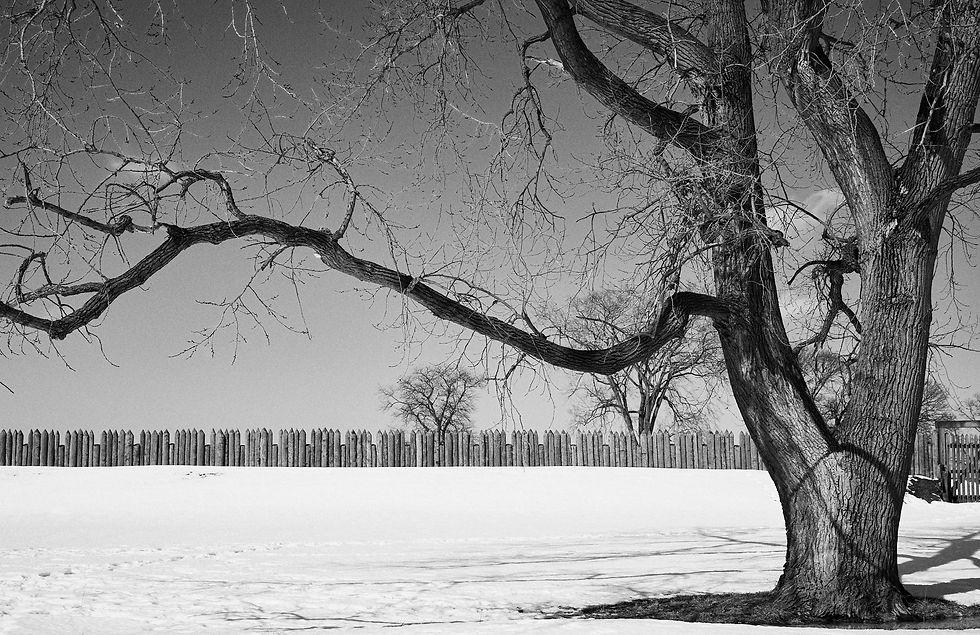Fort Meigs
- Tedd Long

- Jan 22, 2022
- 3 min read
Updated: Jun 29, 2022

Built as a supply depot and staging point for operations into Detroit and Canada, and also to provide command of the rapids of the Maumee River, Fort Meigs constitutes the largest wooden walled fortification in North America. Ground was broken on February 2, 1813 under the orders of General William Henry Harrison. Today, a museum and state memorial occupy a 65-acre wooded park featuring the ten-acre fort, its stockade wall, seven blockhouses, five cannon batteries, and numerous interior eight-foot high earthworks.

Fort Meigs survived two sieges by British troops led by General Proctor and the last major Native American confederation led by Tecumseh. The Americans survived the British bombings by digging small caves into the fort's earthworks and staying under cover. Tecumseh left the second siege disgusted that it was impossible to fight people who live like “groundhogs”.


While this reconstructed fort provides a unique experience for anyone interested in local history and the War of 1812, the journals of the soldiers who built the original fort and lived inside its wooden palisades provide fascinating snapshots of life inside what became known as the "Gibraltar of the West."
An excellent account was chronicled by Captain Daniel Cushing in his personal diary, October, 1812–July, 1813. He recorded the following entry in March 1813, a month in which two to three men were dying every day at the fort due to disease or the elements:
“Our camp is overwhelmed with mud and water...”
One month later, he documented the intensity of the first siege of Fort Meigs on May 1, 1813:
At 2 o'clock in the morning the British opened their artillery upon our garrison from their gun-boats... At 8 o'clock they hoisted the red flag at their lower battery and commenced firing with 24-, 12- and 6-pounders, and eight inch mortars. They fired at us this day 240 shot and shells; did very little damage. They continued firing shells through the night but not often, just enough to keep our camp from rest. We keep up a heavy fire on them all day from different parts of our camp.

Alexander Bourne, an Adjutant in the Ohio Militia recorded this first-hand account of his role in the first siege.
"About the middle of the siege, Captain Wood ordered me to take a fatigue party and throw up a short entrenchment near the rear line. The ground, however, was very exposed, being nearly in range of the powder magazine, at which time the enemy were throwing red-hot balls to blow it up, and these balls passed between the men, hissing and boiling in the bank. The men would leave their work and declare they could not stand it.
Captain Wood gave me an unlimited order for whisky and directed me to give it to my men every half-hour and make them drink until they were insensible to fear, but not too drunk to stand and work. He said, 'There is no other way; it must be done in extreme cases', and so I did it. The men kept at their work, reeling and cursing the British. I lost not a man."

After surviving the first siege in May, and another focused around subterfuge in July of 1813, Fort Meigs was torn down and rebuilt on a smaller scale. The American army left the fort at the end of the summer to pursue the British, and their Indian allies, into Canada—leaving 100 Ohio militiamen behind to guard Fort Meigs.



Comments